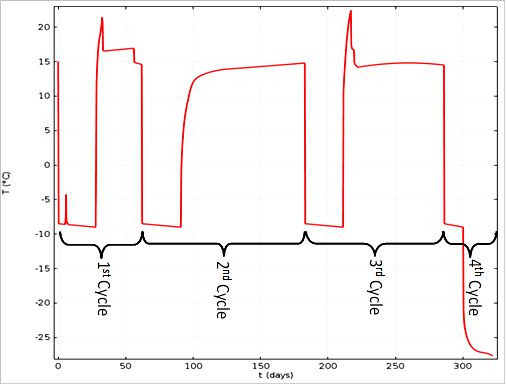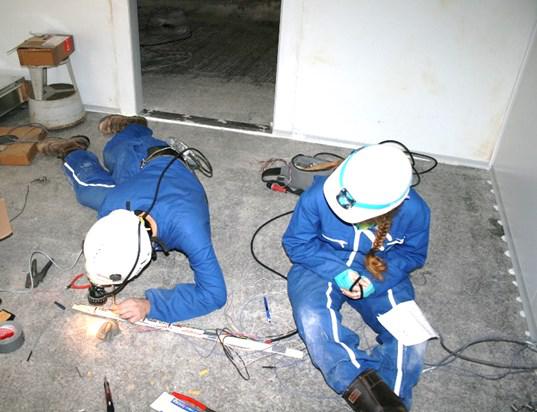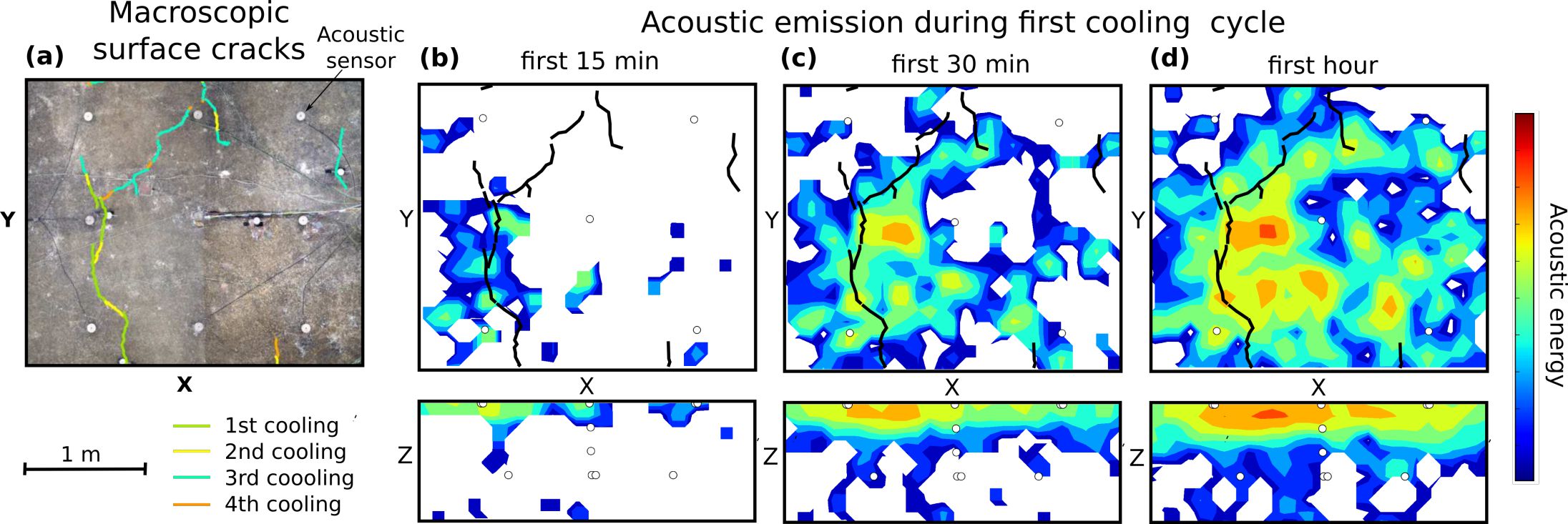
Case study of a thermo-mechanical field test simulating high frequency gas storage cycles in salt caverns
An experiment was undertaken in an salt mine to assess the influence of high temperature changes on the stability of salt cavities as a consequence of high frequency gas storage operation cycles. A salt rock block was exposed to repetitive rapid cooling cycles while its thermo-mechanical and acoustic response was recorded by a multiparameter monitoring system. Data processing and analysis yiel da precise time lapse image of the damaging effects in the rock salt
Context.
Underground natural gas storage in salt caverns provides high deliverability as they allow high rates of injection and withdrawal. Due to today's highly variable energy market and consumption, injection and withdrawal cycles tends to increase significantly raising questions about the integrity of the salt storage caverns and potential loss of deliverability. These high frequency cycling operations indeed tend to generate high thermo-mechanical loading suspected to induce damage at the walls and roof of the cavern. To improve the understanding of the geomechanical behavior of salt caverns under such thermal loading, the SMRI (Solution Mining Research Institute) agreed to fund the Starfish experimental project led by Storengy in partnership with INERIS, MinesParisTech, and CSME (la Compagnie des Salins du Midi et de l’Est).Solution.
A field test was designed and performed in the Varangéville salt mine (France) operated by CSME, where salt content is ~94% and the ambient temperature ~15°C. A ~3mx3mx1.3m sized footwall salt block, equipped with several monitoring equipments, was thermally stimulated on its floor surface by a cooling device allowing repetitive, rapid, temperature drops of 25°C. Geotechnical monitoring was covered by a highresolution multiparameter monitoring system including 16 passive and active acoustic sensors, thermal gauges as well as strain cells, at different depths.
Time series of the temperature cycles applied to the free surface of the salt block during 300 days
Results.
Besides continuous velocity measurements between active and passive sensors, acoustic monitoring sensors recorded a total of 58 426 events, with more than 21 600 during the 1st cooling cycle; number of acoustic emissions decreased asymptotically during the following cooling cycles.Advanced automated processing of the waveforms and the acoustic swarm was optimized based on SYTMIS software suite. During each cycle, the acoustic events are initially located at the surface of the block and then deepen as the salt cools deeper. Also, the average depth reached by the acoustic emissions varied significantly between each cycles, reaching 90 cm during the 1st cooling period; and only 74 cm for all following cooling cycles.3D locations of acoustic events show crack initiations and coalescences that strongly correlate in space and time with the spreading of the temperature front downwards. This corresponds also with a progressive change from predominantly tensile fracture mechanisms to shear fracture mechanisms. The magnitude of the acoustic events was found around 5 which is coherent with observed dimensions of salt crystals. Results support the theoretical mechanical concept (Sicsic et Bérest 2014) where only the major cracks (figure below) are selected. The first cooling phase governs the overall impact, as it is characterized by the strongest and deepest acoustic emissions.
Installation of the ultrasonic passive and active sensors inside the salt rock mass under the experimental cooling chamber
Lesson learned.
This unique field experiment allowed to reveal and quantify the thermo-mechanic response of salt rocks hosting cavities to high temperature drops of 25°C. Ultrasonic monitoring gives an accurate 3D picture of the progressive development of cracks inside the rock during the thermal cycles among which the first has a prominent role. Current research works are being made to develop exploitation strategies by underground storage operators to minimize potential damage of salt caverns.
Comparison between the macroscopic surface cracks and the cumulated acoustic energy density versus time.